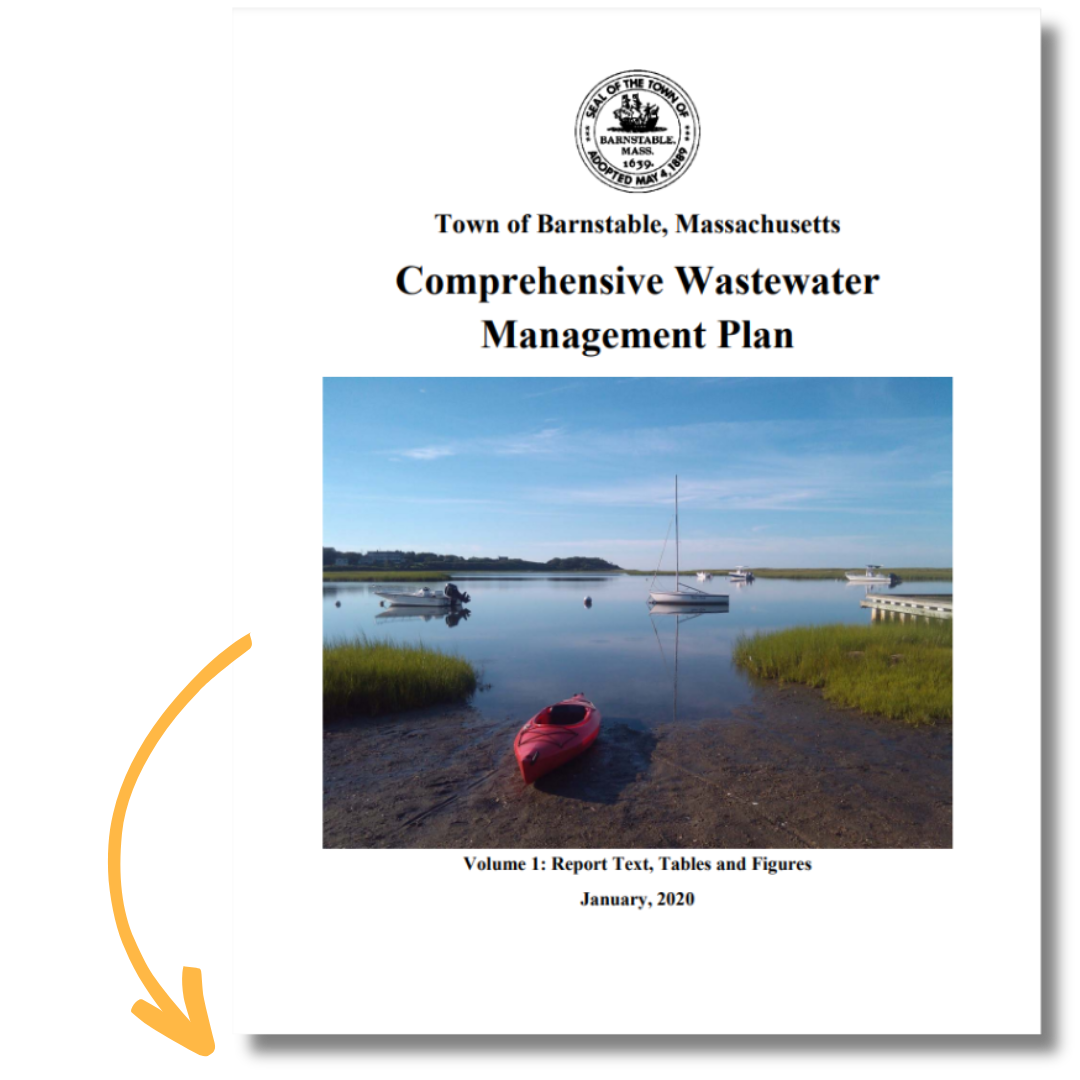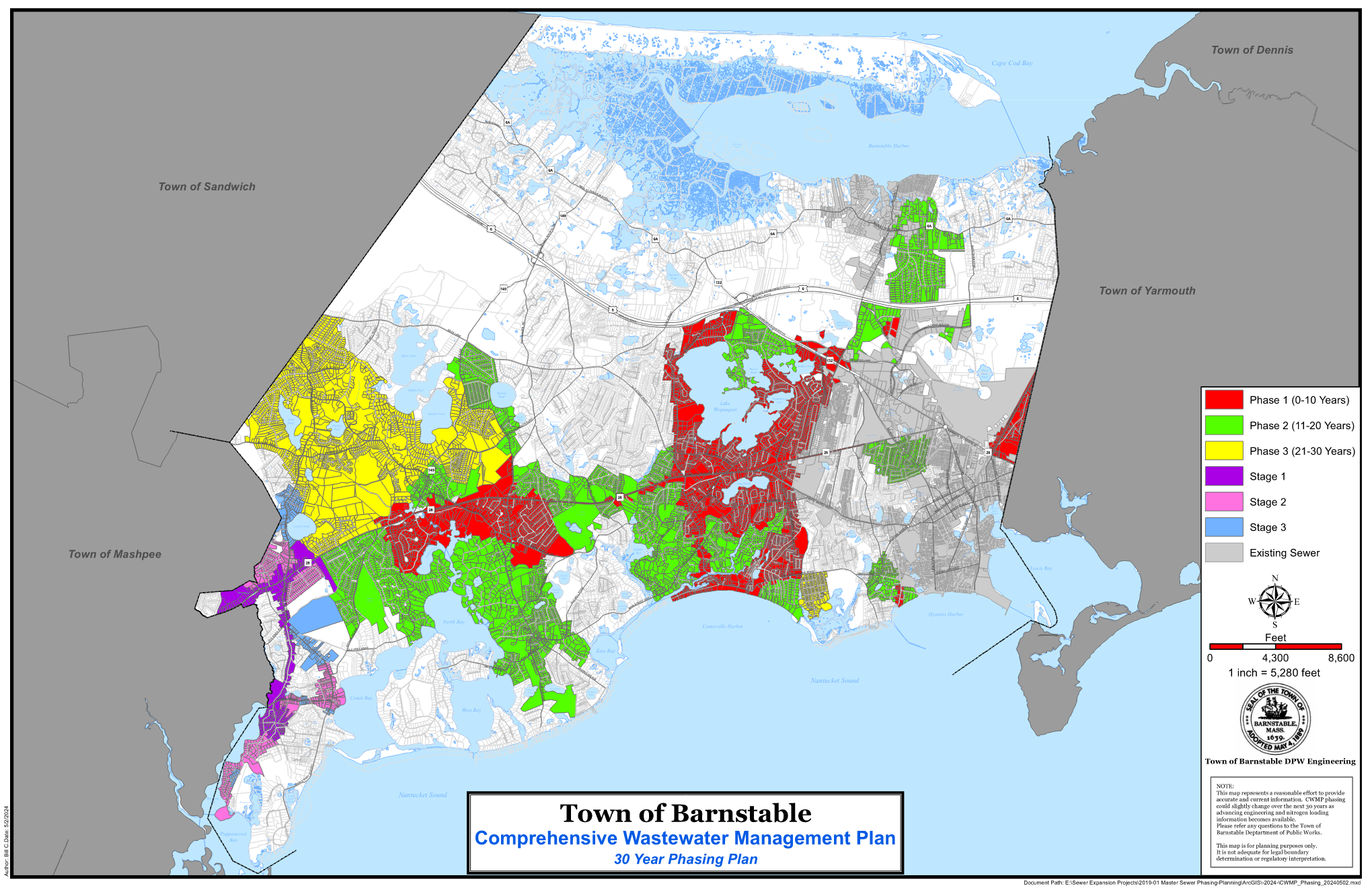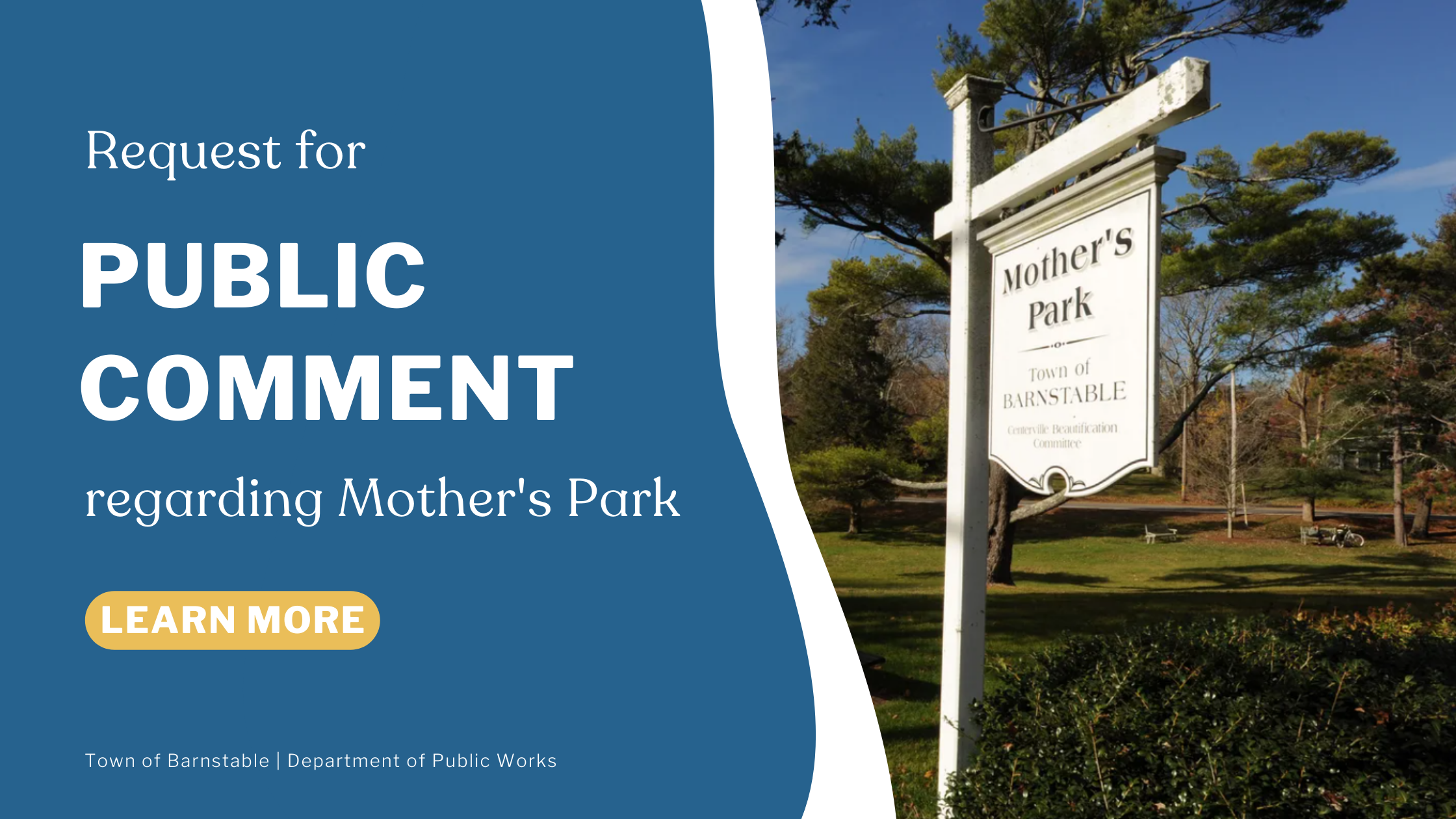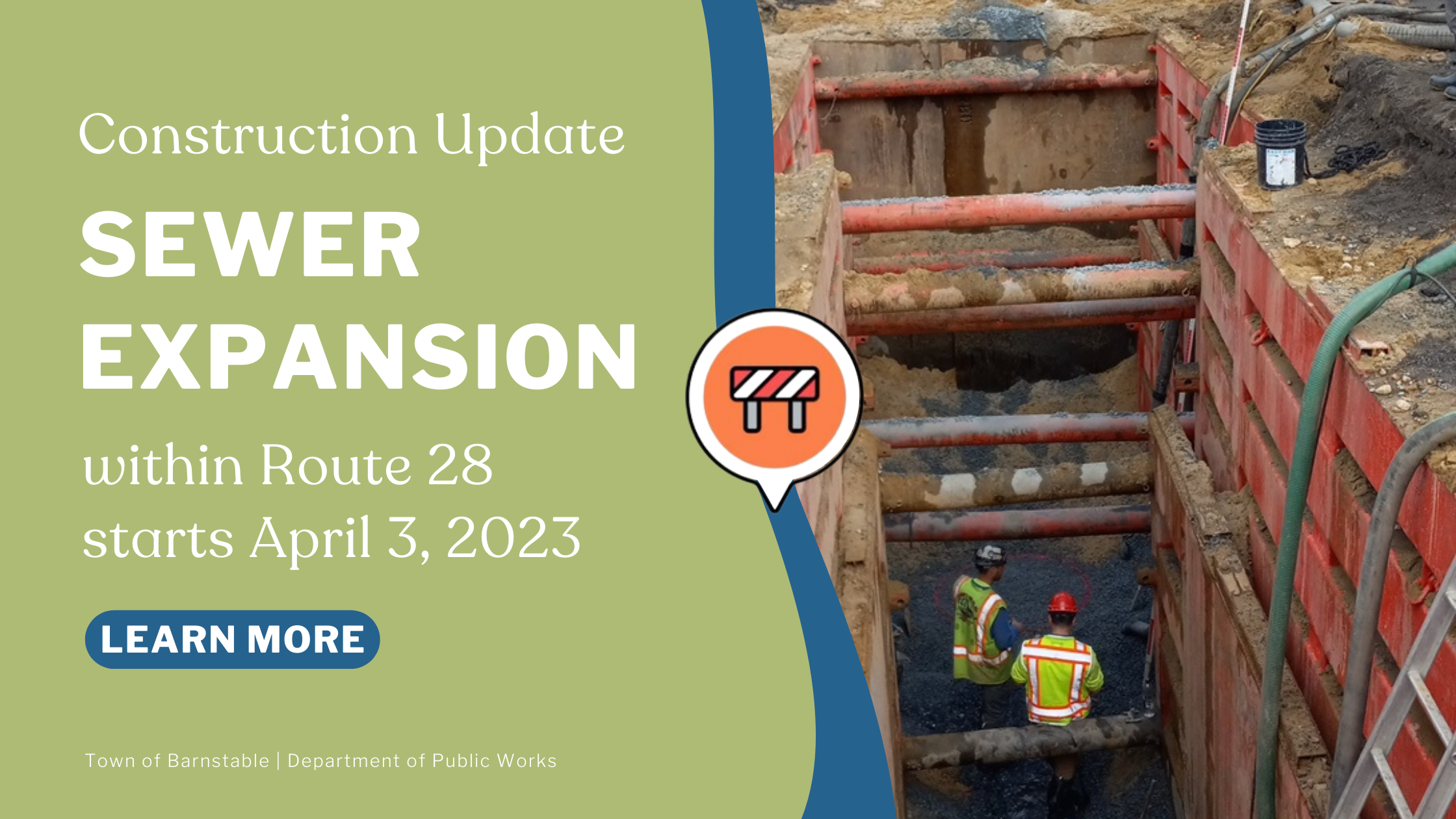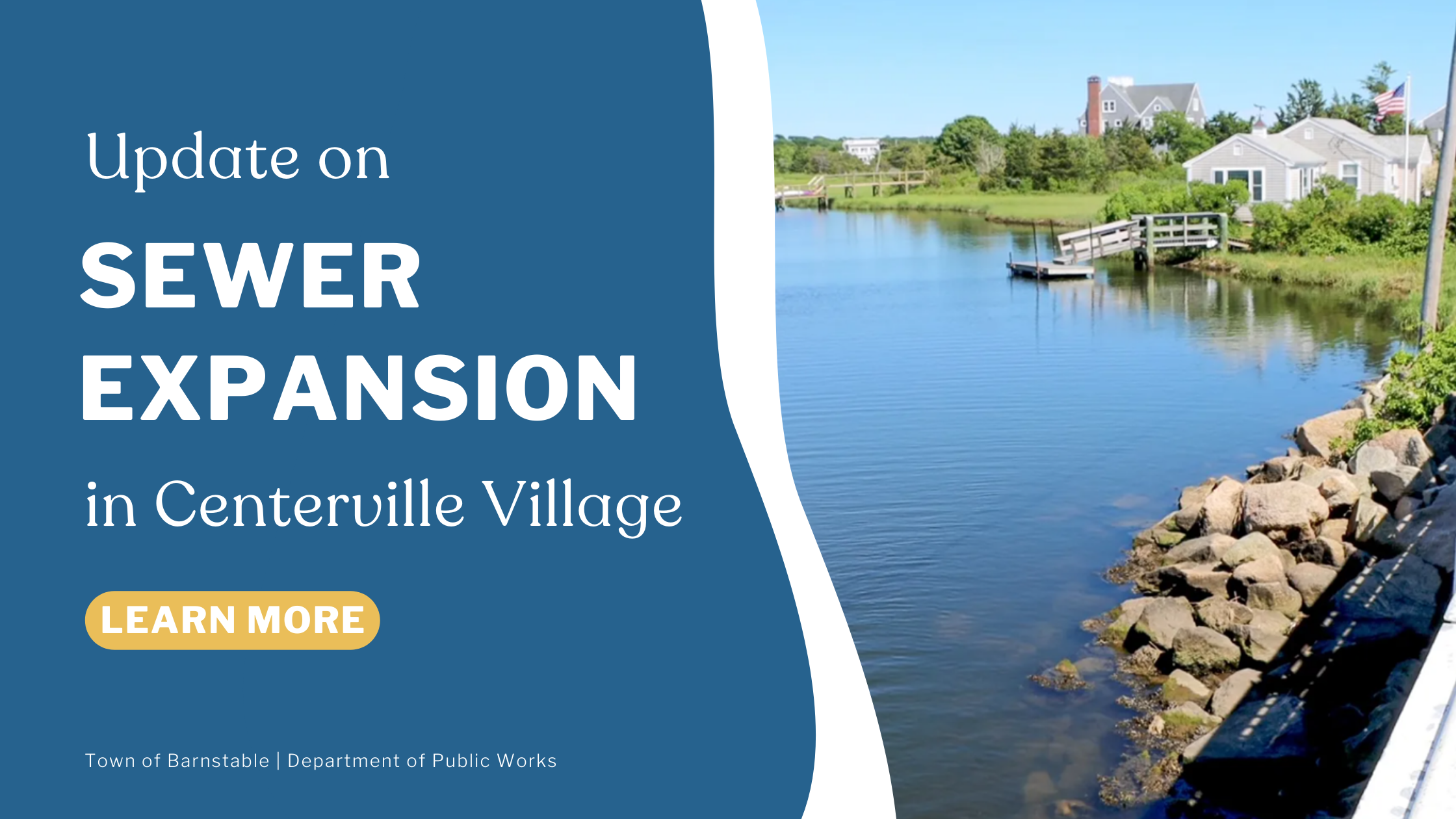Comprehensive Wastewater Management Plan
Review the full Comprehensive Wastewater Management Plan (CWMP) and related sewer expansion projects.
What is the CWMP?
The Comprehensive Wastewater Management Plan (CWMP) is a town-wide, state approved, science-based plan to protect Barnstable’s coastal waters, ponds and drinking water by managing nutrient pollution from wastewater. To accomplish this, the plan calls for an expansion of the Town’s wastewater infrastructure (sewers) as well as other innovative and nature-based approaches such as inlet dredging, cranberry bog conversions and use of nitrogen removing septic systems.
The 30-year plan is comprised of three 10-year phases, predominantly focused on sewer expansion. Each phase consists of multiple individual projects that will proceed through permitting. The plan is designed to reduce nutrient pollution in embayments to a level consistent with regulatory thresholds know as Total Maximum Daily Loads (TMDLs). By reducing nutrient pollution in embayments, the plan also protects water quality in ponds, and drinking water sources. In addition to meeting water quality thresholds, the plan is designed to provide the wastewater infrastructure needed to support community economic development and affordable housing needs.
Three, 10-Year Phases
The 30-year Comprehensive Wastewater Management Plan (CWMP) is comprised of three, 10-year phases, predominantly focused on sewer expansion. Each phase consists of multiple individual projects that will proceed through permitting. The plan is designed to reduce nutrient pollution in embayments to a level consistent with regulatory thresholds know as Total Maximum Daily Loads (TMDLs).
Currently, the Town is operating within Phase 1 of the CWMP. Phase 1 consists of 16 individual sewer expansion projects that will result in roughly 90 miles of new sewer infrastructure. Once complete, Phase 1 will remove approximately 44% of the nitrogen impacting our waters.
Why does the Town of Barnstable have to have this plan?
The plan is a regulatory requirement to meet water quality standards under the federal Clean Water Act (Act). Due to excessive nitrogen pollution from surrounding watersheds, many of Barnstable’s coastal embayments are considered “impaired waters” in violation of water quality standards under the Act. Regulatory thresholds for acceptable levels of nitrogen in these waters, called Total Maximum Daily Loads (TMDLs), have been certified by federal and state environmental agencies. The plan provides the road map for meeting the TMDLs and restoring the health of coastal waters.
Barnstable and other towns on Cape Cod are the designated Waste Treatment Management Agencies (WMA) responsible for planning for and implementing wastewater infrastructure and water quality improvement projects designed to meet TMDLs. This designation is codified under the Cape Cod’s Area Wide Water Quality Management Plan Update (208 Plan Update), developed pursuant to Section 208 of the Clean Water Act, which provides a framework to restore embayment water quality on Cape Cod.
How will implementation of the plan be paid for?
The estimated cost of the 30-year plan is approximately $1.4 billion, including construction, borrowing costs and inflation. The Town has already made significant progress in meeting this funding need. Through legislative action at both the state and local levels the town has created over 50% of the estimated funding sources needed for this program. For the remaining resources needed, the Town has developed an equitable and affordable financing plan to fully implement the CWMP.
The Town has created an existing dedicated revenue stream that will provide an estimated $600 million over the 30-year implementation timeline. This revenue stream consists primarily of proceeds from the hotel/motel room occupancy tax, short- term rental occupancy tax, local meals tax and a new excise tax of 2.75% that applies to all types of lodging on Cape Cod.
As new customers come on-line to the public sewer system, revenue generated from user rate revenue is estimated to contribute over $200 million to the plan.
How will the remaining funding be met?
With existing spending and revenues accounted for, the remaining funding needed to implement the plan is approximately $600 million over thirty years.
The Town is proposing a two-part strategy to meet this need:
A Sewer Assessment Ordinance adopted by Town Council created a sewer assessment that applies only to properties that will be receiving sewer service. The sewer assessment of $10,000 per sewered property at the start of the program. This amount reflects only a portion of the actual cost of sewering the property. It is also less than the potential increase in property value an owner will benefit from by being connected to sewer service. Impacted property owners have the option of paying the full amount upfront, or amortizing the assessment over 30 years, to be included on quarterly tax bills.
The remaining funding needed to fund sewer construction could come from a reduction in the annual operating budget or a debt exclusion override to authorize an increase in the property tax levy, or a combination of both. This portion of funding would apply to all property owners in Town.
Comprehensive Financial Advisory Committee FAQs
The Comprehensive Financial Advisory Committee (CFAC) has compiled a detailed list of frequently asked questions about sewering, the CWMP and finances surrounding plan implementation.
Latest News
Mother’s Park: Request for Public Comment
As part of the Town of Barnstable’s Comprehensive Wastewater Management Plan (CWMP), the Town is seeking Legislative approval for proposed alterations to Mother’s Park, Centerville. Public comments will be accepted until close of business on Monday, May 15, 2023.
Sewer Expansion Transitions to Route 28
Starting Monday, April 3, 2023, through Friday, May 25, 2023, sewer construction will transition into the Route 28 roadway. Construction will occur during the hours of 8:30AM to 5:00PM, weather permitting. Posted detours will be in place, supported by onsite traffic control.
Update on Sewer Expansion in Centerville Village
On Tuesday, March 14, 2023, Town Engineer, Griffin Beaudoin, P.E., provided an overview of the Centerville Village Sewer Expansion Project, which effectively will follow the proposed Park City Wind project route from Craigville Beach Road to Shootflying Hill Road.

